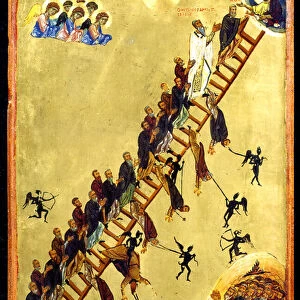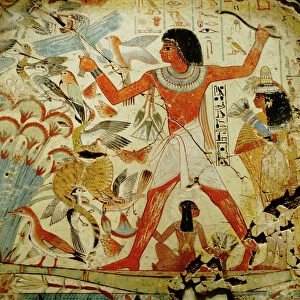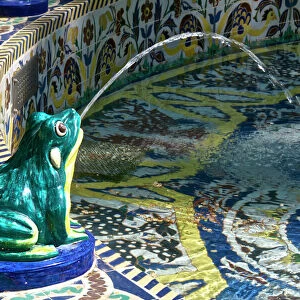Home > Arts > Contemporary art > Sculpture > Ceramic sculptures
Shabti, Late Period-Ptolemaic Period (724-31 BCE). Creator: Unknown
![]()

Wall Art and Photo Gifts from Heritage Images
Shabti, Late Period-Ptolemaic Period (724-31 BCE). Creator: Unknown
Shabti, Late Period-Ptolemaic Period (724-31 BCE)
Heritage Images features heritage image collections
Media ID 36361212
© Heritage Art/Heritage Images
1st Century Bc 7th Century Bc Arms Folded Folded Arms Hellenistic Late Period Ptolemaic Ptolemaic Dynasty Ptolemaic Period Shabti Shawabti Terra Cotta Terracotta Tomb Figure Ushabti Figure Ancient Egyptian Mausoleum Mizraim Posture
FEATURES IN THESE COLLECTIONS
> Africa
> Egypt
> Related Images
> Arts
> Contemporary art
> Sculpture
> Ceramic sculptures
> Historic
> Egyptian pyramids and tombs
EDITORS COMMENTS
In this image, a Shabti figure from the Late Period-Ptolemaic Period of Ancient Egypt (724-31 BCE) stands before us, arms folded in a posture of readiness. The Shabti, also known as Ushabtis or Shawabtis, were funerary figurines believed to serve the deceased in the afterlife, performing tasks and offering protection. This intricately detailed Shabti figure is made of terracotta, a common material for such figurines due to its availability and affordability. The figure wears a simple linen garment, adorned with a white crown, symbolizing the deceased's royal status. The arms are crossed in front of the chest, a common posture for Shabtis, suggesting a sense of protection and readiness to serve. The Shabti figure's face exhibits a serene expression, with almond-shaped eyes and a slight smile. The intricate details of the figure's features, including the wrinkles on the forehead and the defined muscles in the arms, demonstrate the skillful craftsmanship of the ancient Egyptian artisans. This Shabti figure was likely part of a larger collection of funerary objects placed in a tomb or mausoleum, possibly that of a member of the Ptolemaic Dynasty, which ruled Egypt during this period. The figure's origin is unknown, but it is now part of the collection at the Los Angeles County Museum of Art (LACMA), where it continues to captivate and inspire visitors with its intricate details and rich historical significance. The Shabti figure's close-up, studio shot allows us to appreciate the intricacies of the figure's design, from the delicate folds of the linen garment to the subtle details of the facial features. This image offers a glimpse into the ancient Egyptian belief in the afterlife and the importance of providing the deceased with the necessary tools and protection for their journey.
MADE IN THE USA
Safe Shipping with 30 Day Money Back Guarantee
FREE PERSONALISATION*
We are proud to offer a range of customisation features including Personalised Captions, Color Filters and Picture Zoom Tools
SECURE PAYMENTS
We happily accept a wide range of payment options so you can pay for the things you need in the way that is most convenient for you
* Options may vary by product and licensing agreement. Zoomed Pictures can be adjusted in the Cart.





